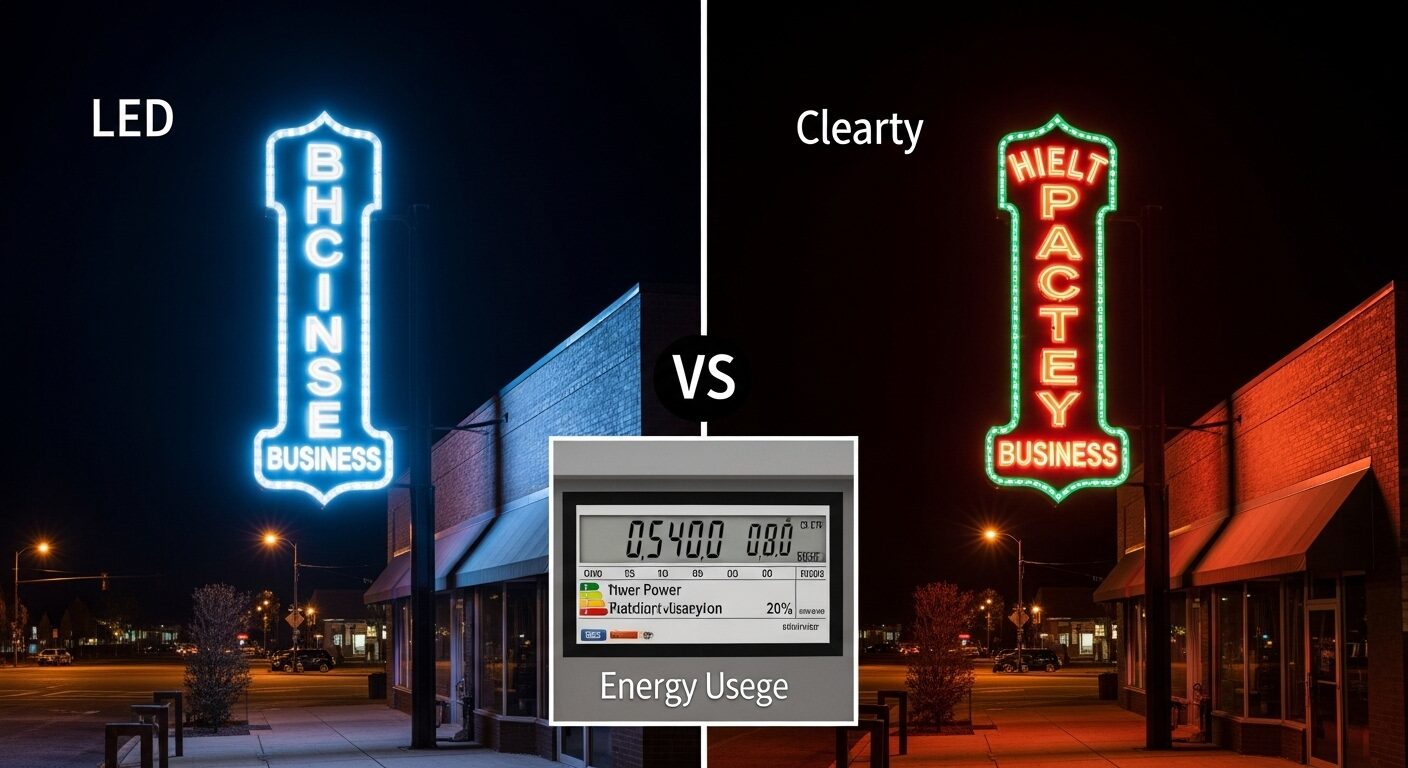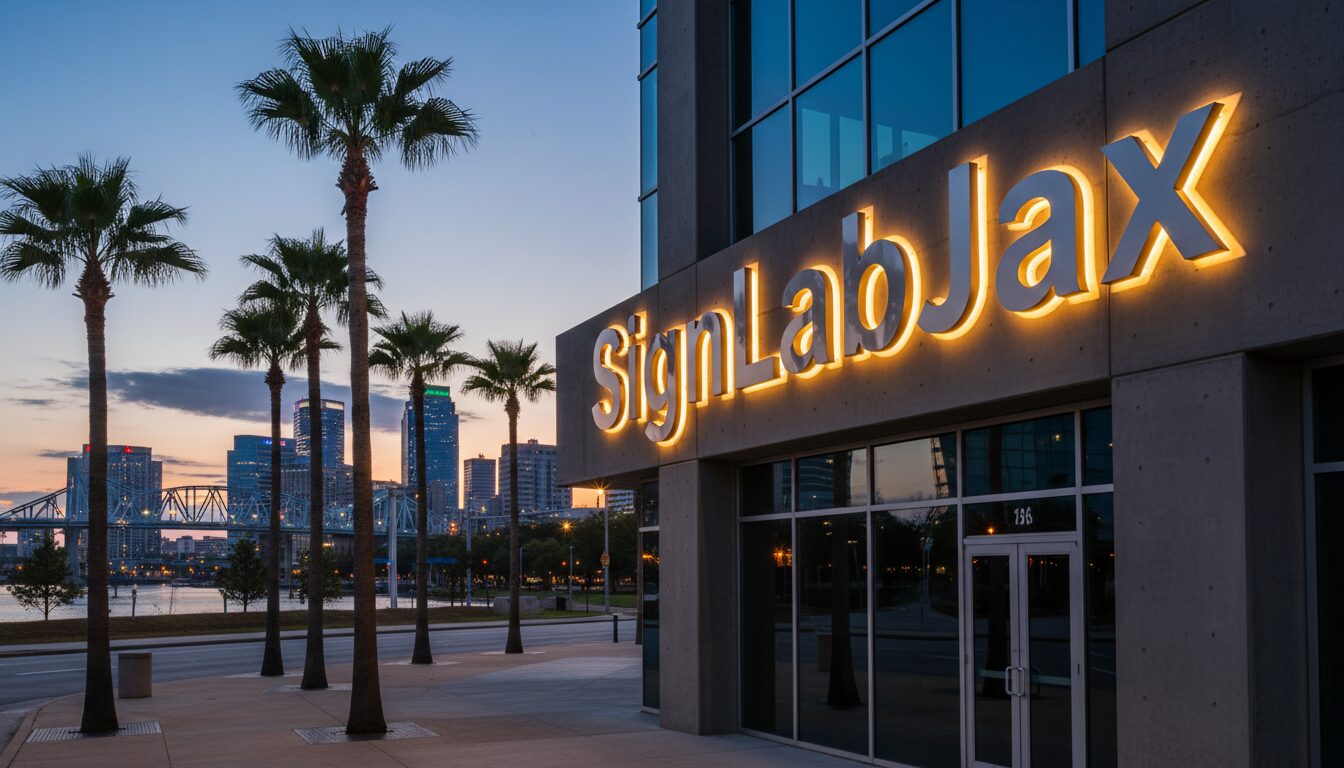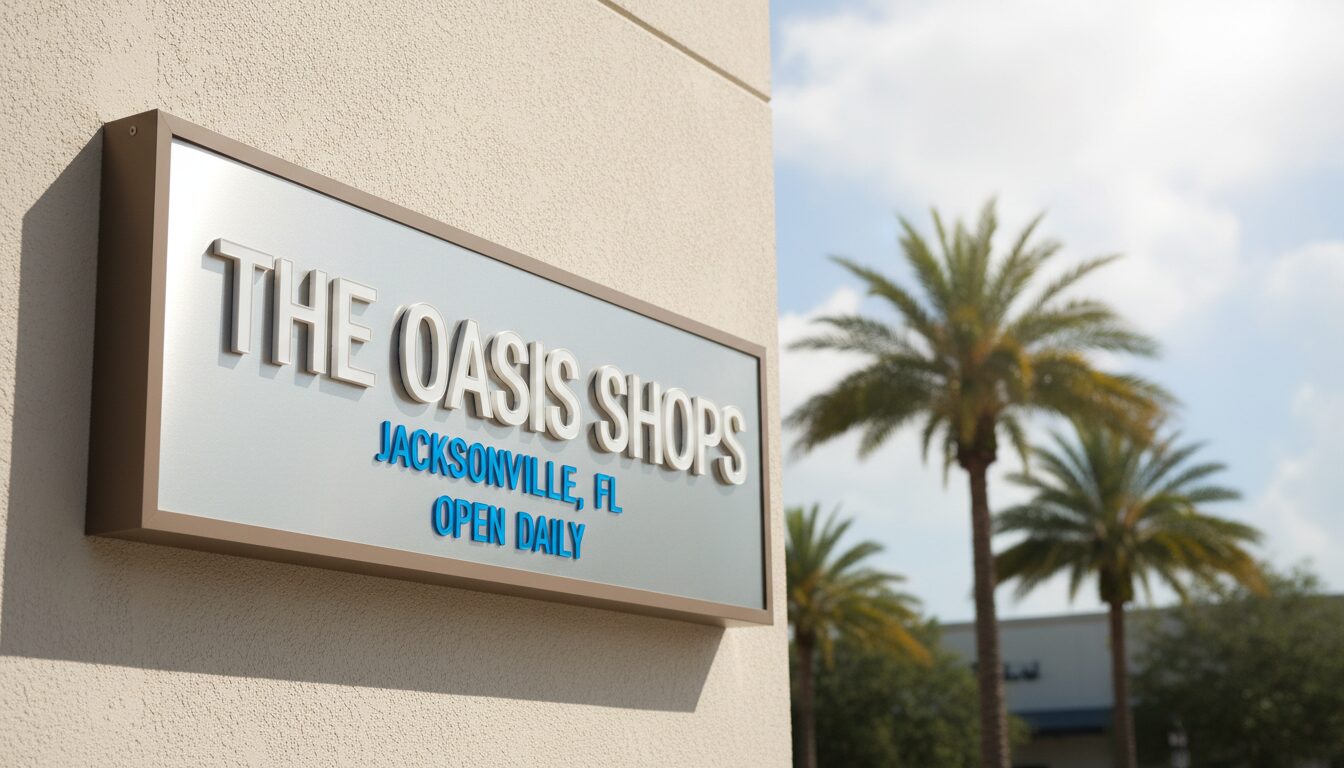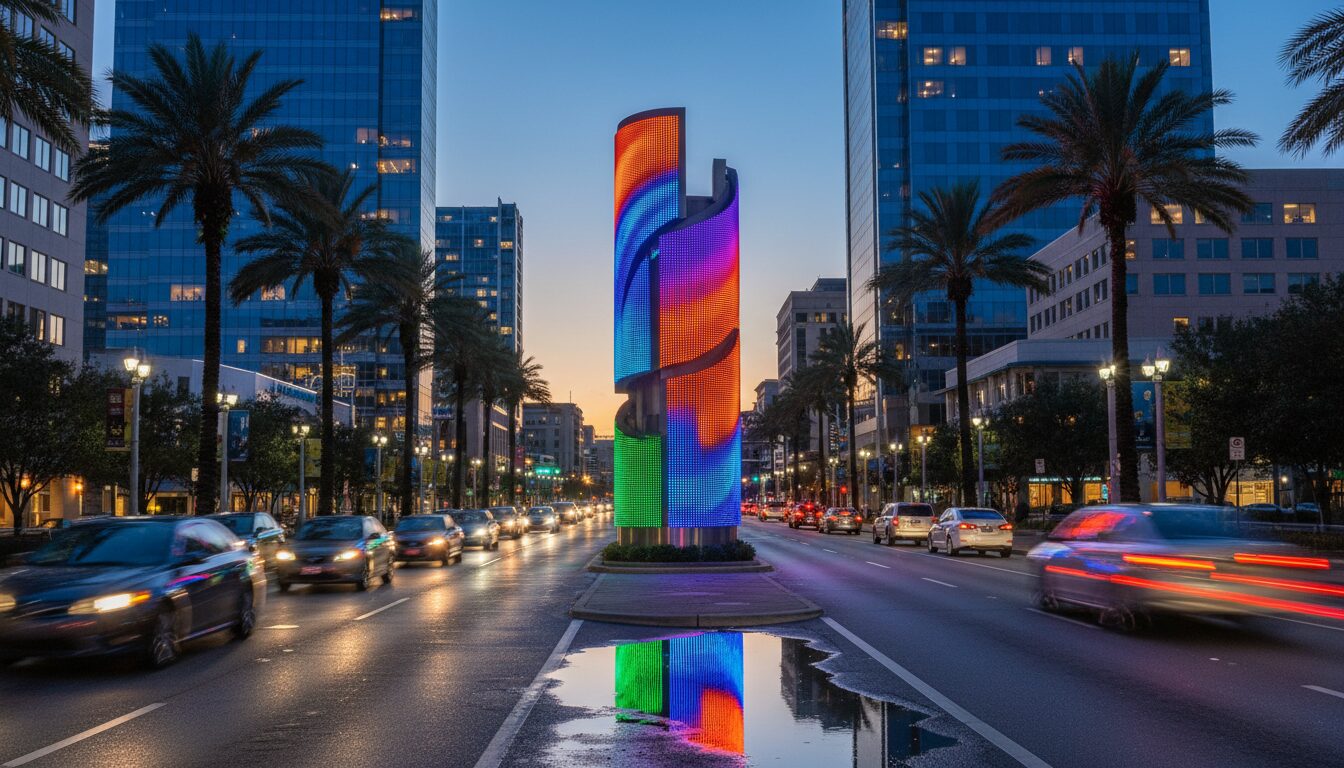Jacksonville businesses face mounting energy costs that significantly impact monthly operating expenses. Commercial electricity rates in Jacksonville average 12.85¢/kWh, substantially higher than many national averages, making energy efficiency crucial for maintaining competitive operating margins.
Traditional signage lighting technologies consume enormous amounts of electricity while generating excessive heat that provides no business value. Neon signs, fluorescent lighting, and incandescent bulbs convert most of their energy consumption into waste heat rather than useful illumination, creating ongoing financial drains that compound monthly.
LED signs represent a transformative technology that can dramatically reduce business energy costs while providing superior visibility and performance. LED signs cost 90% less to operate because they consume less energy than similarly sized neon and incandescent units. Understanding the specific energy savings potential helps Jacksonville businesses make informed decisions about modernizing their signage investments while reducing operational expenses.
Understanding Jacksonville’s Energy Cost Challenge
Jacksonville’s commercial electricity environment creates significant operational pressures for businesses using traditional lighting technologies. The average monthly commercial electricity bill in Florida is $639, which ranks 15th in the nation, making energy efficiency improvements particularly valuable for cost-conscious business owners.
Local Energy Rate Analysis: Commercial electricity rates in Jacksonville typically range from 12-15¢/kWh depending on usage patterns and utility providers. JEA (Jacksonville Electric Authority) structures commercial rates with both demand charges and energy charges, meaning businesses pay for peak electricity usage and total consumption. These combined costs make inefficient lighting systems particularly expensive to operate.
Traditional Signage Energy Consumption: Conventional neon and incandescent signage systems consume substantial electricity while operating continuously to maintain business visibility. A typical neon “OPEN” sign might consume 100-150 watts continuously, resulting in monthly electricity costs of $25-40 just for basic business identification. Larger traditional signs consume proportionally more energy with correspondingly higher monthly operating costs.
Compounding Cost Impact: Energy costs accumulate continuously throughout business operations, with traditional signage representing fixed expenses that provide no opportunity for operational optimization. Unlike variable business expenses that can be adjusted based on economic conditions, inefficient signage creates mandatory monthly costs that persist regardless of business performance.
LED Technology: The Science Behind Energy Savings
LED (Light Emitting Diode) technology achieves dramatic energy savings through fundamentally different light production methods compared to traditional lighting systems. LED light bulbs are up to 90% more efficient than traditional incandescent lightbulbs, with efficiency improvements translating directly into reduced operational costs.
Energy Conversion Efficiency: Traditional incandescent bulbs convert only 5% of consumed electricity into visible light, with the remaining 95% released as waste heat. LED technology achieves 30-40% efficiency, generating significantly more light per watt consumed while producing minimal heat. This efficiency differential creates immediate and substantial energy cost reductions for businesses converting to LED signage.
Heat Production Comparison: LEDs emit very little heat compared to traditional lighting technologies. Incandescent bulbs release 90% of their energy as heat and CFLs release about 80% of their energy as heat. Reduced heat production means LED signs require no additional cooling costs and create more comfortable environments for customers and employees.
Operational Performance: LED signs maintain consistent brightness throughout their operational lifespan while traditional lighting systems gradually dim over time. This consistency ensures reliable business visibility without requiring frequent maintenance or replacement that interrupts business operations and increases total cost of ownership.
Real-World Energy Savings Calculations for Jacksonville
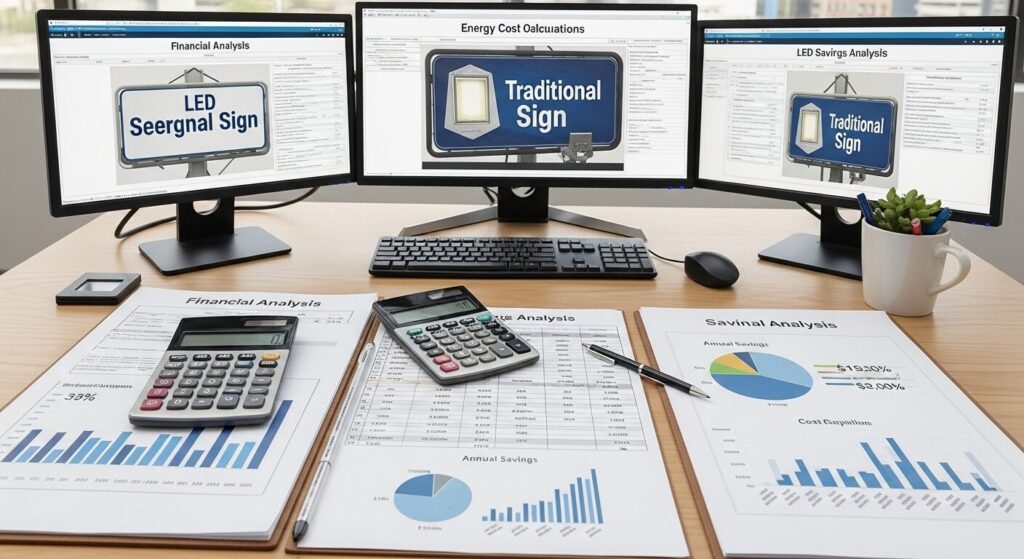
Quantifying LED energy savings requires analyzing specific usage patterns and local electricity costs relevant to Jacksonville businesses. These calculations demonstrate the financial impact of converting traditional signage to LED technology using verified energy consumption data and local utility rates.
Typical Business Sign Conversion: A medium-sized business converting a traditional neon sign consuming 200 watts to an equivalent LED sign consuming 20 watts immediately reduces energy consumption by 180 watts. Operating 12 hours daily at Jacksonville’s average commercial rate of 12.85¢/kWh, this conversion saves approximately $102 annually per sign converted.
24/7 Operation Scenarios: Many businesses operate signage continuously for maximum visibility and security benefits. LED OPEN/CLOSED signs consuming only 20-30 watts compared to neon equivalents consuming 100-150 watts create substantial ongoing savings. Only $4.20 annually to operate one sign, annual savings of $140 per sign when compared to equivalent neon alternatives.
Large Display Applications: Businesses utilizing extensive signage systems experience proportionally greater savings through LED conversion. A large business converting multiple traditional signs or implementing comprehensive LED signage systems can reduce annual electricity costs by thousands of dollars while improving visibility and brand presentation.
Long-term Accumulation: Energy savings compound over LED system lifespans of 8-15 years, creating total cost reductions that often exceed initial investment costs within 2-3 years of installation.
LED Durability and Maintenance Cost Reductions
Beyond direct energy savings, LED signage systems provide substantial operational cost advantages through extended lifespans and reduced maintenance requirements. These additional cost benefits enhance the total financial advantage of LED technology for Jacksonville businesses.
Lifespan Advantages: A good quality LED bulb can last 3 to 5 times longer than a CFL and 30 times longer than an incandescent bulb. Professional LED signage systems typically operate effectively for 8-15 years under normal business conditions, eliminating frequent replacement costs associated with traditional lighting technologies.
Maintenance Reduction: LED signs require minimal maintenance compared to neon or fluorescent systems that need regular servicing, gas refills, or component replacements. Reduced maintenance means fewer service calls, less business disruption, and lower ongoing operational expenses throughout the sign’s lifetime.
Weather Resistance: LED technology performs reliably in Florida’s challenging climate conditions, including high humidity, temperature fluctuations, and severe weather events. Cold weather drains the efficiency and power of many lighting solutions, but LED lights offer superior performance in cold conditions, making them ideal for year-round outdoor applications.
Replacement Cost Avoidance: Traditional signage systems require periodic major repairs or complete replacement due to component failures or obsolescence. LED systems avoid these large unexpected expenses through reliable long-term operation and component availability.
Environmental Benefits and Business Positioning
LED signage adoption provides environmental advantages that support corporate sustainability goals while potentially qualifying for utility rebates and tax incentives available to energy-efficient business investments.
Carbon Footprint Reduction: LED signs are better for the environment because their CO2 emissions are lower than other light sources. Businesses reducing energy consumption through LED adoption contribute to environmental sustainability while demonstrating corporate responsibility to environmentally conscious customers.
Utility Incentive Programs: Many utilities offer rebates and incentives for businesses implementing energy-efficient lighting systems. These programs can offset portion of LED installation costs while providing immediate financial benefits beyond ongoing energy savings.
Customer Perception Benefits: Modern LED signage systems project innovation and environmental responsibility that appeals to sustainability-minded customers. Professional LED installations demonstrate business modernization and operational efficiency that enhances overall brand perception.
Regulatory Compliance: Some jurisdictions implement energy efficiency requirements for commercial properties. LED signage adoption ensures compliance with current and anticipated energy regulations while positioning businesses ahead of potential future requirements.
Conclusion
LED signs offer Jacksonville businesses immediate and long-term energy cost reductions that significantly improve operational efficiency and profitability. With local commercial electricity rates averaging 12.85¢/kWh, the 90% energy reduction achieved through LED conversion creates substantial monthly savings that compound over system lifespans.
Professional LED signage systems provide superior visibility and performance while reducing maintenance requirements and environmental impact. The combination of energy savings, durability advantages, and reduced operational complexity makes LED technology the most cost-effective choice for modern business signage.
Strategic LED signage investment pays for itself through energy savings while building long-term operational advantages that improve business competitiveness. Understanding local energy costs and conversion benefits enables informed decision-making that optimizes both immediate and future business performance.
Ready to cut your Jacksonville business energy costs with professional LED signage that delivers superior performance and substantial savings? Contact SignLab JAX for comprehensive energy analysis and LED signage solutions designed specifically for Northeast Florida’s business environment.

